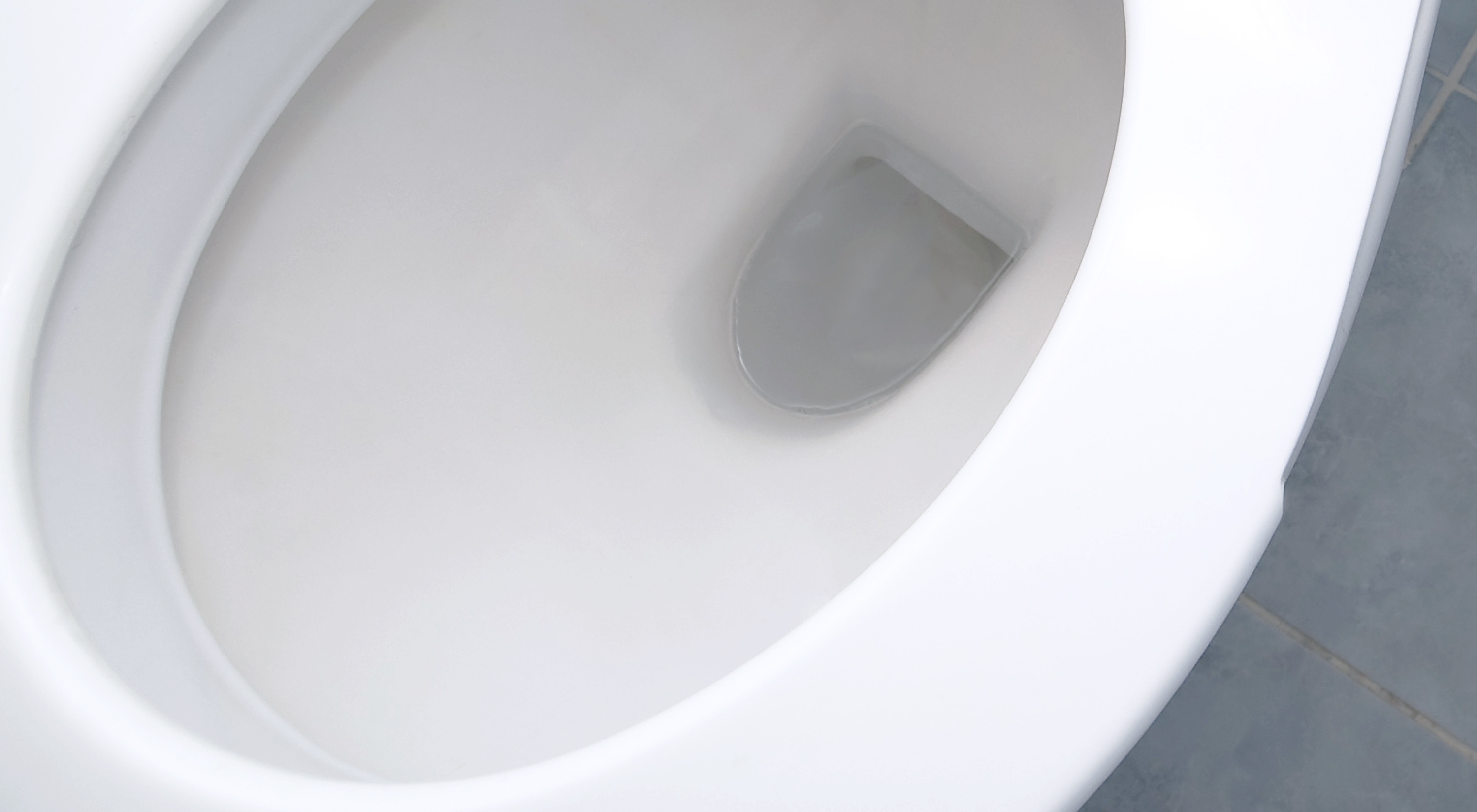

Articles
Why Is The Water In My Toilet Bowl Low
Modified: January 6, 2024
Discover articles that explain the reasons behind low water levels in your toilet bowl. From common causes to troubleshooting tips, find all the information you need.
(Many of the links in this article redirect to a specific reviewed product. Your purchase of these products through affiliate links helps to generate commission for Storables.com, at no extra cost. Learn more)
Introduction
Have you noticed that the water level in your toilet bowl is lower than usual? If so, you might be wondering what could be causing this issue. A low water level in the toilet bowl can be a frustrating and inconvenient problem to deal with. However, understanding the potential causes and learning how to fix it can help you resolve the issue quickly and efficiently.
There are several possible reasons why the water in your toilet bowl is low. It could be a result of a clogged toilet trap, low water level adjustments, a faulty fill valve, a cracked or damaged toilet bowl, leaking toilet tank or bowl, or even water supply issues. In this article, we will explore each of these possibilities and provide you with the solutions to fix the low water level in your toilet bowl.
Key Takeaways:
- Don’t Let Low Water Levels in Your Toilet Bowl Ruin Your Day
Understanding the causes, from clogged traps to faulty fill valves, empowers you to take action and restore proper water flow for efficient flushing and a hassle-free bathroom experience. - Address Low Water Levels in Your Toilet Bowl Promptly
From clearing clogged traps to fixing leaks and adjusting water levels, proactive maintenance ensures optimal functionality, prevents water wastage, and avoids potential damage to your plumbing system.
Read more: Why Is Toilet Bowl Water Low
Possible Causes of Low Water in Toilet Bowl
1. Clogged Toilet Trap
A clogged toilet trap is one of the most common reasons for low water in the toilet bowl. The toilet trap is a curved pipe located at the base of the toilet bowl that is designed to prevent sewer gases from entering your bathroom. It can get clogged with debris, such as toilet paper, hair, or foreign objects, which can restrict the flow of water into the toilet bowl. To fix this issue, you will need to remove the clog to allow proper water flow.
2. Low Water Level Adjustments
Another possible cause of low water in the toilet bowl is incorrect water level adjustments. Most toilets have a water level adjustment mechanism that allows you to control the amount of water in the tank. If this adjustment is set too low, it can result in insufficient water flowing into the toilet bowl. To fix this, simply adjust the water level to the appropriate height according to the toilet’s instructions.
3. Faulty Fill Valve
A faulty fill valve can also lead to low water in the toilet bowl. The fill valve is responsible for refilling the toilet tank with water after each flush. If the fill valve is not functioning properly, it may not be allowing enough water to enter the tank, resulting in a low water level in the bowl. Replacing the faulty fill valve should resolve this issue.
Read more: Why Is There No Water In My Toilet Bowl
4. Cracked or Damaged Toilet Bowl
A cracked or damaged toilet bowl can cause water to leak out, resulting in a lower water level in the bowl. Inspect the toilet bowl for any visible cracks or damages. If you find any, you will need to replace the toilet bowl to ensure proper water containment.
5. Leaking Toilet Tank or Bowl
A leaking toilet tank or bowl can also lead to low water in the toilet bowl. Check for any signs of water leakage around the base of the toilet or in the tank. If you notice any leaks, it’s important to repair them promptly to maintain the water level in the bowl.
6. Water Supply Issues
In some cases, the low water level in the toilet bowl may be due to water supply issues. Check if there are any problems with the water supply line, such as a closed valve or low water pressure. Addressing these supply issues should help restore the water level in the bowl to its normal state.
Now that we have examined the possible causes of low water in the toilet bowl, it’s time to explore the solutions to fix this issue. In the next section, we will discuss the steps you can take to resolve the low water level problem in your toilet bowl.
Key Takeaways:
- Don’t Let Low Water Levels in Your Toilet Bowl Ruin Your Day
Understanding the causes, from clogged traps to faulty fill valves, empowers you to take action and restore proper water flow for efficient flushing and a hassle-free bathroom experience. - Address Low Water Levels in Your Toilet Bowl Promptly
From clearing clogged traps to fixing leaks and adjusting water levels, proactive maintenance ensures optimal functionality, prevents water wastage, and avoids potential damage to your plumbing system.
Read more: Why Is Toilet Bowl Water Low
Possible Causes of Low Water in Toilet Bowl
When you notice that the water level in your toilet bowl is lower than usual, there can be several potential causes. Understanding these causes can help you identify the issue and take the necessary steps to fix it. Here are some of the most common reasons for low water in the toilet bowl:
1. Clogged Toilet Trap
A clogged toilet trap is a common reason for low water in the toilet bowl. The toilet trap is a curved pipe located at the base of the toilet bowl that prevents sewer gases from entering your bathroom. Over time, the trap can become clogged with debris, such as toilet paper, hair, or foreign objects. This restricts the flow of water into the toilet bowl, resulting in a lower water level. To fix this issue, you will need to clear the clog in the toilet trap using a plunger or a toilet auger.
2. Low Water Level Adjustments
Another possible cause of low water in the toilet bowl is incorrect adjustments to the water level. Most toilets have a water level adjustment mechanism, such as a float or a water control valve, that allows you to control the amount of water in the tank. If this adjustment is set too low, it can result in insufficient water flowing into the toilet bowl. To fix this issue, you will need to adjust the water level to the appropriate height according to the manufacturer’s instructions.
3. Faulty Fill Valve
A faulty fill valve can also lead to low water in the toilet bowl. The fill valve is responsible for refilling the toilet tank with water after each flush. If the fill valve is not functioning properly, it may not be allowing enough water to enter the tank, resulting in a low water level in the bowl. To fix this issue, you will need to replace the faulty fill valve with a new one. Make sure to turn off the water supply to the toilet before removing the old fill valve and installing the new one.
Read more: Why Is There No Water In My Toilet Bowl
4. Cracked or Damaged Toilet Bowl
A cracked or damaged toilet bowl can cause water to leak out, resulting in a lower water level in the bowl. Inspect the toilet bowl for any visible cracks or damages. If you find any, you will need to replace the toilet bowl to ensure proper water containment. This may require the assistance of a plumber or a professional handyman.
5. Leaking Toilet Tank or Bowl
A leaking toilet tank or bowl can also lead to low water in the toilet bowl. Check for any signs of water leakage around the base of the toilet or in the tank. If you notice any leaks, it’s important to repair them promptly to maintain the water level in the bowl. Depending on the severity of the leak, you may need to replace the wax ring seal between the toilet bowl and the floor, tighten loose connections, or replace faulty seals or gaskets.
6. Water Supply Issues
In some cases, the low water level in the toilet bowl may be due to water supply issues. Check if there are any problems with the water supply line leading to the toilet, such as a closed valve or low water pressure. Ensure that the water supply valve is fully open and the water pressure is adequate. If you suspect any issues with the water supply, consult a plumber to assess and address the problem.
By understanding these possible causes of low water in the toilet bowl, you can troubleshoot the issue and determine the appropriate course of action. In the next section, we will discuss how to fix the low water level in the toilet bowl.
Clogged Toilet Trap
A clogged toilet trap is one of the most common reasons for low water in the toilet bowl. The toilet trap is a curved pipe located at the base of the toilet bowl that prevents sewer gases from entering your bathroom. Over time, this trap can become clogged with debris, such as toilet paper, hair, or foreign objects. When the trap is clogged, it restricts the flow of water into the toilet bowl, resulting in a lower water level.
To fix a clogged toilet trap and restore the water level in the bowl, follow these steps:
- Gather your supplies: You will need a plunger or a toilet auger, rubber gloves, and a bucket or towels to catch any water.
- Prepare the area: Lay down towels or place a bucket near the toilet to catch any water that may overflow during the unclogging process.
- Protect yourself: Put on rubber gloves to protect your hands from any potential mess.
- Apply downward pressure: Place the plunger over the drain hole in the toilet bowl, ensuring a tight seal. Apply downward pressure and vigorously plunge up and down to dislodge the clog. Repeat this motion several times.
- Try a toilet auger: If the plunger doesn’t do the trick, you can use a toilet auger. Insert the auger into the toilet trap and rotate the handle clockwise to break up the clog. Continue to rotate the auger until the obstruction is pushed through or broken apart.
- Flush the toilet: After successfully clearing the clog, flush the toilet to ensure proper water flow. This will help determine if the water level has been restored to its normal level in the toilet bowl.
If the clog persists or you are unable to clear it using a plunger or toilet auger, it may be necessary to seek professional help from a plumber. They have specialized tools and expertise to handle more stubborn or complex clogs.
Remember to exercise caution when attempting to unclog a toilet trap. Avoid using harsh chemicals, as they can damage the plumbing system. If you are unsure or uncomfortable with the process, it is best to contact a professional to ensure the clog is cleared safely and effectively.
By addressing a clogged toilet trap, you can restore the proper water flow and eliminate the low water level in your toilet bowl.
Low Water Level Adjustments
If you notice that the water level in your toilet bowl is lower than usual, it could be due to incorrect adjustments to the water level. Most toilets have a mechanism that allows you to control the amount of water in the tank, which in turn affects the water level in the bowl. If this adjustment is set too low, it can result in a lower than normal water level in the toilet bowl.
To fix low water level issues caused by incorrect adjustments, follow these steps:
- Locate the water level adjustment mechanism: The water level adjustment mechanism is typically located inside the toilet tank. It can be a float ball, a float cup, or an adjustable valve.
- Read the manufacturer’s instructions: Refer to the toilet’s user manual or check the manufacturer’s website for instructions specific to your toilet model. This will guide you in identifying and adjusting the water level correctly.
- Adjust the water level: Use the designated adjustment mechanism to increase the water level in the toilet tank. This may involve turning a screw, sliding a mechanism up or down, or adjusting the float arm.
- Test the water level: Flush the toilet and observe the water level in the bowl. It should reach a proper height, typically around halfway up the bowl. If the water level is still low, continue adjusting the mechanism until the desired water level is achieved.
- Ensure proper fill and flush: With the water level adjusted, make sure the tank fills up adequately after each flush and that there are no issues with the flush mechanism. This will ensure proper water flow and maintenance of the desired water level in the bowl.
It’s important to note that there may be variations in water level adjustment mechanisms depending on the toilet model. Therefore, it’s crucial to consult the manufacturer’s instructions for accurate guidance. If you’re unsure or unable to adjust the water level yourself, consider contacting a professional plumber for assistance.
Proper water level adjustments help to maintain optimal flushing performance and eliminate the problem of low water in the toilet bowl. By ensuring the correct water level, you can ensure efficient waste removal and prevent any inconveniences caused by insufficient water in the bowl.
Read more: Why Is There Ants In My Toilet Bowl
Faulty Fill Valve
A faulty fill valve can be a common culprit behind low water levels in the toilet bowl. The fill valve is responsible for refilling the toilet tank with water after each flush. If the fill valve is not functioning properly, it may not be allowing enough water to enter the tank, leading to a lower water level in the bowl.
To fix low water levels caused by a faulty fill valve, follow these steps:
- Turn off the water supply: Locate the shut-off valve near the base of the toilet and turn it clockwise to shut off the water supply.
- Flush the toilet: Flush the toilet to drain the remaining water in the tank and reduce the water level in the bowl.
- Remove the old fill valve: Disconnect the water supply line that connects to the fill valve. Unscrew the nut located underneath the tank that secures the fill valve in place. Lift the old fill valve out of the tank.
- Install the new fill valve: Follow the manufacturer’s instructions to install the new fill valve. This typically involves inserting the valve into the hole at the bottom of the tank and securing it with the provided hardware.
- Adjust the fill valve: Adjust the height of the fill valve according to the manufacturer’s instructions to ensure the proper water level in the tank. This adjustment may involve adjusting the height of the fill valve’s float or adjusting a screw on the valve.
- Reconnect the water supply line: Reattach the water supply line to the fill valve and tighten the nut to secure it in place.
- Turn on the water supply: Turn the shut-off valve counterclockwise to restore the water supply to the toilet.
- Test the water level: Flush the toilet and observe the water level in the bowl. It should now be at the proper level, indicating that the new fill valve is functioning correctly.
If you’re unsure about replacing the fill valve or if the issue persists even after replacing it, it’s advisable to seek assistance from a professional plumber. They can diagnose any underlying issues and provide a suitable solution.
By replacing a faulty fill valve, you can ensure that the toilet tank fills up with the appropriate amount of water, resulting in a normal water level in the toilet bowl. This will improve the flushing performance and prevent any inconveniences caused by low water levels.
Cracked or Damaged Toilet Bowl
If you have noticed a lower water level in your toilet bowl, it is possible that the toilet bowl itself may be cracked or damaged. A crack or damage in the toilet bowl can cause water to leak out, leading to a decreased water level in the bowl.
To determine whether your toilet bowl is cracked or damaged, follow these steps:
- Visual inspection: Carefully inspect the entire surface of the toilet bowl, both inside and outside, to look for any visible cracks or damage. Take your time and examine the bowl from different angles and lighting conditions.
- Water leakage: Observe the area around the base of the toilet bowl for any signs of water leakage. If you notice dampness or water pooling around the base, it is an indication that there may be a crack or damage in the bowl.
- Water staining: Check the inside of the toilet bowl for any water staining. Cracks or damage in the bowl can sometimes lead to water seeping through and leaving behind visible stains.
- Listen for water sounds: Flush the toilet and listen for any unusual sounds such as hissing or running water. This could indicate a leak or crack in the bowl.
If you discover that your toilet bowl is indeed cracked or damaged, it is recommended to replace it to prevent further water leakage and maintain the water level in the bowl. Replacing a toilet bowl can be a complex task, and it is best to seek the assistance of a professional plumber to ensure proper installation.
During the replacement process, the old toilet bowl will be removed, and a new one will be installed in its place. This involves disconnecting the water supply, unscrewing the nuts securing the bowl to the floor, and carefully lifting the bowl off the flange. The new bowl will then be positioned over the flange, secured with new bolts, and connected to the water supply.
Replacing a cracked or damaged toilet bowl will not only restore the proper water level in the bowl but also prevent further water leakage and potential damage to your bathroom floor. It is important to address this issue promptly to avoid any additional complications.
Leaking Toilet Tank or Bowl
One possible cause of a low water level in the toilet bowl is a leaking toilet tank or bowl. A leak can result in water escaping from the tank or the bowl, leading to a decrease in the water level. It is crucial to identify and fix these leaks to maintain the proper water level in the toilet bowl.
To determine if your toilet tank or bowl is leaking, follow these steps:
- Visual inspection: Examine the area around the base of the toilet and the tank for any signs of water leakage. Look for puddles, damp spots, or water stains.
- Listen for sounds: Listen for any continuous or intermittent hissing sounds coming from the toilet. These sounds can indicate a leak within the tank or bowl.
- Food coloring test: Conduct a simple food coloring test to identify a leak from the toilet tank. Add a few drops of food coloring into the tank water and wait for about 30 minutes without flushing. If the water in the bowl changes color, it indicates a leak between the tank and the bowl.
If you discover a leak in your toilet tank or bowl, there are several steps you can take to fix the problem:
- Tighten connections: Check all the connections around the tank, including the fill valve, flush valve, and inlet pipe. Tighten any loose connections to ensure a proper seal.
- Replace faulty seals or gaskets: If the leak is coming from faulty seals or gaskets, they will need to be replaced. This includes the flapper seal, doughnut seal, and any other damaged or worn-out seals.
- Replace the wax ring seal: If the leak is around the base of the toilet, it may be due to a damaged wax ring seal. To fix this, the toilet will need to be lifted, and the old wax ring seal replaced with a new one.
- Consider professional help: If you are unsure about how to fix the leak or if the problem persists even after attempting the above steps, it is advisable to seek the assistance of a professional plumber. They have the expertise and tools to diagnose and rectify the issue effectively.
Fixing leaks in the toilet tank or bowl is essential not only for maintaining the water level in the bowl but also to prevent water wastage and potential damage to your bathroom flooring or subfloor. Addressing leaks promptly will help ensure the proper functioning of your toilet and conserve water.
Water Supply Issues
A low water level in the toilet bowl can also be attributed to water supply issues. Problems with the water supply can result in insufficient water flowing into the toilet, leading to a decrease in the water level. Addressing these water supply issues is crucial to restore the proper water level in the toilet bowl.
To diagnose and fix water supply issues causing a low water level in the toilet bowl, follow these steps:
- Check the shut-off valve: Locate the shut-off valve near the base of the toilet and ensure it is fully open. Sometimes the valve may be partially closed, limiting the water flow to the toilet. Turn the valve counterclockwise to open it fully and allow for adequate water supply.
- Examine the water supply line: Inspect the water supply line connecting the shut-off valve to the toilet tank. Look for any kinks, bends, or obstructions that may be impeding the water flow. Straighten any kinks or bends to ensure a smooth and uninterrupted water supply.
- Check for sediment or debris: Sediment or debris can accumulate in the water supply line or the shut-off valve, obstructing the flow of water. To remove any sediment or debris, turn off the water supply, disconnect the water supply line, and flush it out over a bucket or sink.
- Verify water pressure: Low water pressure can also contribute to a low water level in the toilet bowl. Check the water pressure in your home by turning on other faucets or showers. If you notice low water pressure throughout your home, it may be an issue with the water supply system. Contact your water provider to address the problem.
- Consult a professional: If you have inspected the shut-off valve, water supply line, and water pressure, and still experience water supply issues, it is recommended to consult a professional plumber. They can assess the situation, identify any underlying issues, and provide the most suitable solution.
By addressing water supply issues, you can ensure a consistent and adequate water supply to the toilet, which will help restore the proper water level in the bowl. It is essential to maintain a steady water flow to enable efficient flushing and prevent any inconveniences caused by a low water level.
Remember, it’s always a good option to seek professional help if you are uncertain or uncomfortable with diagnosing and resolving water supply issues on your own. They have the expertise and knowledge to handle more complex water supply problems effectively.
How to Fix Low Water in Toilet Bowl
If you are experiencing a low water level in your toilet bowl, it can be frustrating and inconvenient. Fortunately, there are several steps you can take to fix this issue and restore the proper water level. Here’s a guide on how to fix low water in the toilet bowl:
1. Check and Clear Toilet Trap
Start by inspecting the toilet trap, which is a curved pipe located at the base of the toilet bowl. If it is clogged with debris, such as toilet paper or foreign objects, it can restrict the flow of water into the bowl. Use a plunger or a toilet auger to clear the clog and restore proper water flow.
2. Adjust Water Level in Toilet Tank
Check the water level adjustment mechanism in the toilet tank, such as a float or water control valve. Ensure it is set at the appropriate level to allow enough water to flow into the toilet bowl. Consult the manufacturer’s instructions for specific guidance on adjusting the water level.
3. Replace Faulty Fill Valve
If the fill valve is faulty, it may not be allowing enough water to enter the toilet tank, resulting in a low water level in the bowl. Replace the faulty fill valve with a new one to ensure proper water intake. Be sure to turn off the water supply before removing the old fill valve and installing the new one.
Read more: Why Is My Toilet Bowl Yellow
4. Inspect and Repair Cracked Toilet Bowl
If you discover any cracks or damage in the toilet bowl, it can cause water to leak out and result in a lower water level. Consider replacing the toilet bowl to prevent further leakage and maintain the desired water level in the bowl. Seek professional assistance for safe and proper installation.
5. Fix Leaks in Toilet Tank or Bowl
Inspect the toilet tank and bowl for any signs of leaks. Check for puddles, damp spots, or water stains around the tank or at the base of the toilet. Replace faulty seals, gaskets, or wax ring seals to eliminate leaks. Ensure all connections are tightened securely and that there are no obstructions in the water supply line.
6. Check Water Supply and Address Issues
Examine the water supply to the toilet, including the shut-off valve and water supply line. Ensure the shut-off valve is fully open and that there are no issues with the water pressure or supply. Address any water supply issues, such as closed valves or low water pressure, to restore a sufficient and consistent water flow to the toilet.
Remember, if you are unsure about any of these steps or if the issue persists, it is advisable to seek the assistance of a professional plumber. They have the expertise and knowledge to diagnose and resolve complex toilet water level problems effectively.
By following these steps and addressing the specific causes of low water in the toilet bowl, you can fix the issue and restore the proper water level. This will ensure efficient flushing and prevent any inconveniences caused by insufficient water in the bowl.
Check and Clear Toilet Trap
One of the common causes of low water in the toilet bowl is a clogged toilet trap. The toilet trap is a curved pipe located at the base of the toilet bowl that prevents sewer gases from entering your bathroom. Over time, debris such as toilet paper, hair, or foreign objects can accumulate in the trap, restricting the flow of water and resulting in a lower water level in the bowl.
To check and clear a clogged toilet trap, follow these steps:
- Gather your supplies: You will need a plunger, rubber gloves, and a bucket or towels to catch any water that may overflow.
- Prepare the area: Lay down towels or place a bucket near the toilet to catch any excess water that may spill out during the unclogging process.
- Protect yourself: Put on rubber gloves to protect your hands from any potential mess.
- Apply downward pressure with a plunger: Place the plunger over the drain hole in the toilet bowl and ensure a tight seal. Apply downward pressure and vigorously plunge up and down to dislodge the clog. Repeat this motion several times to help break up the debris and clear the trap.
- Use a toilet auger (optional): If the plunger doesn’t effectively clear the clog, you can use a toilet auger. Insert the auger into the drain hole in the toilet bowl and rotate the handle clockwise to break up or push out the clog. Continue rotating the auger until the clog is cleared.
- Flush the toilet: After successfully clearing the clog, flush the toilet to ensure proper water flow and to confirm that the water level has returned to normal in the bowl.
If the clog persists or you are unable to clear it using a plunger or toilet auger, it may be necessary to seek assistance from a professional plumber. They will have the expertise and tools required to tackle more stubborn or complex clogs.
Remember to exercise caution when attempting to unclog a toilet trap. Avoid using harsh chemicals, as they can damage the plumbing system. If you are unsure or uncomfortable with the process, it is best to contact a professional to ensure the clog is cleared safely and effectively.
By checking and clearing the toilet trap, you can restore the proper water flow and eliminate the problem of low water in the toilet bowl. This will ensure efficient flushing and prevent any potential backups or overflowing issues in the future.
Read more: Why Is My Toilet Bowl Bubbling
Adjust Water Level in Toilet Tank
If you’re experiencing a low water level in your toilet bowl, one possible cause could be an incorrect water level adjustment in the toilet tank. The water level in the tank directly affects the amount of water that flows into the toilet bowl during each flush. If the water level is set too low, it can result in insufficient water reaching the bowl, leading to a lower water level.
Here’s how you can adjust the water level in the toilet tank:
- Locate the water level adjustment mechanism: The water level adjustment mechanism is typically located inside the toilet tank. It could be a float ball, a float cup, or an adjustable valve.
- Read the manufacturer’s instructions: Consult the toilet’s user manual or check the manufacturer’s website for specific instructions on how to adjust the water level in your particular toilet model. This will provide you with the most accurate guidance.
- Identify the adjustment mechanism: Once you have located the water level adjustment mechanism, familiarize yourself with how it works. Some toilets have a screw or a sliding mechanism, while others have a float that can be adjusted up or down.
- Adjust the water level: Follow the instructions from the manufacturer to adjust the water level. This may involve turning a screw, sliding a mechanism up or down, or bending the float arm to raise or lower the water level.
- Test the water level: After adjusting the water level, flush the toilet and observe the water level in the bowl. It should be at the desired level, typically around halfway up the bowl. If the water level is still low, you may need to make further adjustments.
It’s important to note that the method of adjusting the water level may vary depending on the toilet model. Some toilets have a fill line marked on the inside of the tank, indicating the optimal water level. Adjust to this line or follow the manufacturer’s instructions for the correct water level.
If you’re unsure about adjusting the water level or if the issue persists even after adjusting, it’s best to consult a professional plumber for assistance. They can provide guidance and ensure that the water level is adjusted correctly.
By adjusting the water level in the toilet tank, you can ensure that an adequate amount of water flows into the bowl during each flush. This will help maintain proper flushing performance and prevent issues related to low water levels in the toilet bowl.
Replace Faulty Fill Valve
If you’re experiencing a low water level in your toilet bowl, a faulty fill valve could be the culprit. The fill valve is responsible for refilling the toilet tank with water after each flush. If the fill valve is malfunctioning, it may not be allowing enough water to enter the tank, resulting in a lower water level in the bowl.
Here’s how you can replace a faulty fill valve to address the low water level issue:
- Turn off the water supply: Locate the shut-off valve near the base of the toilet and turn it clockwise to shut off the water supply.
- Drain the toilet tank: Flush the toilet to drain the water from the tank. Alternatively, you can use a sponge or towel to soak up the remaining water in the tank.
- Disconnect the water supply line: Use an adjustable wrench or pliers to loosen and disconnect the water supply line from the bottom of the fill valve.
- Remove the old fill valve: Inside the toilet tank, locate and unscrew the nut that secures the fill valve to the tank. Lift the old fill valve out of the tank.
- Install the new fill valve: Take the new fill valve and position it in the same spot where the old one was. Ensure that it aligns with the mounting hole in the bottom of the tank. Secure the fill valve in place by tightening the nut underneath the tank.
- Connect the water supply line: Reattach the water supply line to the bottom of the new fill valve. Use the adjustable wrench or pliers to tighten the connection securely.
- Turn on the water supply: Turn the shut-off valve counterclockwise to restore the water supply to the toilet.
- Test the water level: Allow the tank to fill up by its own or manually lift the float valve to check if the water level rises to the appropriate level. Adjust the fill valve height, if necessary, according to the manufacturer’s instructions to achieve the desired water level in the tank.
- Check for any leaks: Observe the tank and the surrounding areas for any signs of leaks. If you notice any leaks, tighten the connections or replace faulty seals as needed.
If you’re unsure about replacing the fill valve or if the issue persists even after replacing it, it’s advisable to seek assistance from a professional plumber. They have the expertise to diagnose the problem accurately and provide the appropriate solution.
By replacing a faulty fill valve, you can ensure that the toilet tank refills properly with water after each flush, resulting in the optimal water level in the toilet bowl. This will improve flushing performance and eliminate the problem of low water in the toilet bowl.
Inspect and Repair Cracked Toilet Bowl
A cracked toilet bowl can cause water to leak out, leading to a lower water level in the toilet bowl. It’s important to inspect and repair any cracks in the toilet bowl to prevent further leakage and maintain the desired water level.
Follow these steps to inspect and repair a cracked toilet bowl:
- Visual inspection: Carefully examine the entire surface of the toilet bowl, both inside and outside, for any visible cracks or damage. Take your time and inspect from different angles and lighting conditions to ensure you don’t miss anything.
- Water leakage: Check the area around the base of the toilet bowl for any signs of water leakage. Look for damp spots, puddles, or water stains, as these can indicate cracks that are allowing water to escape.
- Water staining: Look inside the toilet bowl for any water staining on the porcelain. Cracks in the bowl can sometimes cause water to seep through and leave visible stains.
- Listen for water sounds: Pay attention while flushing the toilet for any unusual sounds like hissing or running water. These sounds may indicate a leak or crack in the bowl.
- Consult a professional: If you find any cracks or suspect a leak in the toilet bowl, it’s recommended to consult a professional plumber. They will have the expertise to assess the severity of the crack and determine the best course of action.
Repairing a cracked toilet bowl typically requires the assistance of a professional, as it’s a delicate and intricate process. A plumber may suggest one of the following repair options:
- Crack sealing: For minor cracks, a plumber can use epoxy or plumbing sealant specifically designed for repairing toilet bowls. They will carefully apply the sealant to cover the crack and create a watertight seal.
- Toilet bowl replacement: In case of severe cracks or extensive damage, the best solution may be to replace the entire toilet bowl. A plumber can safely remove the old bowl and install a new one, ensuring a proper water seal and preventing future leaks.
It’s crucial to address any cracks or leaks in the toilet bowl promptly. Ignoring these issues can lead to further damage, water wastage, and potential structural problems in your bathroom.
By inspecting and repairing a cracked toilet bowl, you can eliminate water leakage and maintain the desired water level in the bowl. Consulting a professional plumber will ensure a proper repair and help prevent any future issues with the toilet bowl.
Fix Leaks in Toilet Tank or Bowl
A common cause of low water levels in the toilet bowl is leaks in the toilet tank or bowl. Leaks can lead to water escaping from these areas, resulting in a decrease in the water level. It’s important to identify and fix these leaks to maintain the proper water level in the toilet bowl.
Follow these steps to fix leaks in the toilet tank or bowl:
- Visual inspection: Carefully examine the toilet tank and bowl for any signs of leaks. Look for puddles, damp spots, or water stains around the tank or at the base of the toilet.
- Check the tank components: Inspect the flush valve, fill valve, and other tank components for any signs of leakage or damage. Ensure that the connections are tight, and there are no cracks in the tank or seals.
- Replace faulty seals or gaskets: If you find any faulty seals or gaskets, they will need to be replaced. Common areas for leaks include the flapper seal, doughnut seal, and any other damaged or worn-out seals.
- Replace the wax ring seal: If the leak is occurring at the base of the toilet, it may be due to a damaged wax ring seal. To fix this, the toilet will need to be removed to access and replace the wax ring seal.
- Tighten connections: Check all the connections within the toilet tank and bowl, such as water supply lines, flush valves, and fill valves. If any connections are loose, use an adjustable wrench or pliers to tighten them securely.
- Observe during flushing: Flush the toilet and observe closely for any signs of water leakage. Check for proper water flow and ensure that no water is escaping from the tank or bowl.
- Address hidden leaks: Sometimes leaks can be hidden or intermittent. If you suspect a hidden leak, you can place a few drops of food coloring into the toilet tank and wait for about 30 minutes without flushing. If the color appears in the toilet bowl, it indicates a leak that needs to be addressed.
If you’re unsure about how to fix the leaks or if the problem persists even after attempting the above steps, it’s advisable to seek the assistance of a professional plumber. They have the experience and expertise to diagnose and resolve any complex leaks effectively.
Fixing leaks in the toilet tank or bowl will not only restore the proper water level but also prevent water wastage and potential damage to your bathroom flooring or subfloor. It’s important to address these leaks promptly to avoid any further complications.
Read more: How Do I Fix Low Water Level In Toilet Bowl
Check Water Supply and Address Issues
When dealing with a low water level in the toilet bowl, it is important to examine the water supply to the toilet and address any issues that may be causing the problem. Water supply issues can result in insufficient water flowing into the toilet, leading to a decreased water level in the bowl.
Follow these steps to check the water supply and address any related issues:
- Inspect the shut-off valve: Locate the shut-off valve, usually located near the base of the toilet. Ensure that it is fully open by turning it counterclockwise.
- Check the water supply line: Examine the water supply line that connects the shut-off valve to the toilet tank. Look for any kinks, bends, or obstructions that may be impeding the water flow. Straighten any kinks or bends to ensure a smooth and uninterrupted water supply.
- Verify the water pressure: Low water pressure can also contribute to a low water level in the toilet bowl. Check the water pressure in your home by turning on other faucets or showers. If you notice low water pressure throughout your home, it may indicate an issue with the water supply system. Contact your water provider to address the problem.
- Inspect the fill valve screen: The fill valve screen, located at the bottom of the fill valve, can sometimes become clogged with debris. Inspect the screen and clean it if necessary. This will ensure proper water flow into the toilet tank.
- Check for obstructions in the water line: If the water supply line or fill valve is clear, check for any obstructions further along the water line. Mineral deposits, sediment, or debris can accumulate and impede the water flow. If necessary, disconnect the water supply line and flush it out over a bucket or sink.
- Consult a professional plumber: If you have checked the shut-off valve, water supply line, water pressure, fill valve screen, and any potential obstructions, but the low water level issue persists, it is recommended to consult a professional plumber. They can diagnose and address any underlying issues with the water supply system that may be causing the problem.
By checking the water supply and addressing any issues, you can ensure a consistent and adequate water supply to the toilet. This will help restore the proper water level in the bowl and ensure efficient flushing.
Remember, it’s always a good idea to seek professional help if you are uncertain or uncomfortable with diagnosing and resolving water supply issues on your own. They have the expertise and knowledge to handle more complex water supply problems effectively.
Conclusion
A low water level in the toilet bowl can be a frustrating issue to deal with, but it is often solvable. By understanding the potential causes and taking the necessary steps to fix the problem, you can restore the proper water level and ensure optimal functionality in your toilet.
Throughout this article, we discussed several possible causes of low water in the toilet bowl, including a clogged toilet trap, incorrect water level adjustments, a faulty fill valve, a cracked or damaged toilet bowl, leaking toilet tank or bowl, and water supply issues. Each of these issues requires specific solutions to address the root cause effectively.
To fix low water levels in the toilet bowl, you can take actions such as clearing a clogged trap, adjusting the water level in the tank, replacing a faulty fill valve, repairing or replacing a cracked toilet bowl, fixing leaks in the tank or bowl, and checking the water supply for any issues.
If you encounter difficulties in resolving the low water level issue on your own or if the problem persists despite your efforts, it is advisable to seek the assistance of a professional plumber. They have the expertise and knowledge to diagnose complex problems and provide appropriate solutions.
Remember, maintaining the proper water level in the toilet bowl is essential for efficient flushing and preventing inconveniences. It is important to address the issue promptly to avoid further complications, such as water wastage, potential damage to the plumbing system, or structural issues in your bathroom.
Overall, with the right knowledge and proper actions, you can overcome the challenge of low water levels in the toilet bowl and restore functionality to your bathroom. Taking care of your toilet ensures a comfortable and seamless experience for you and your household members.
Frequently Asked Questions about Why Is The Water In My Toilet Bowl Low
Was this page helpful?
At Storables.com, we guarantee accurate and reliable information. Our content, validated by Expert Board Contributors, is crafted following stringent Editorial Policies. We're committed to providing you with well-researched, expert-backed insights for all your informational needs.
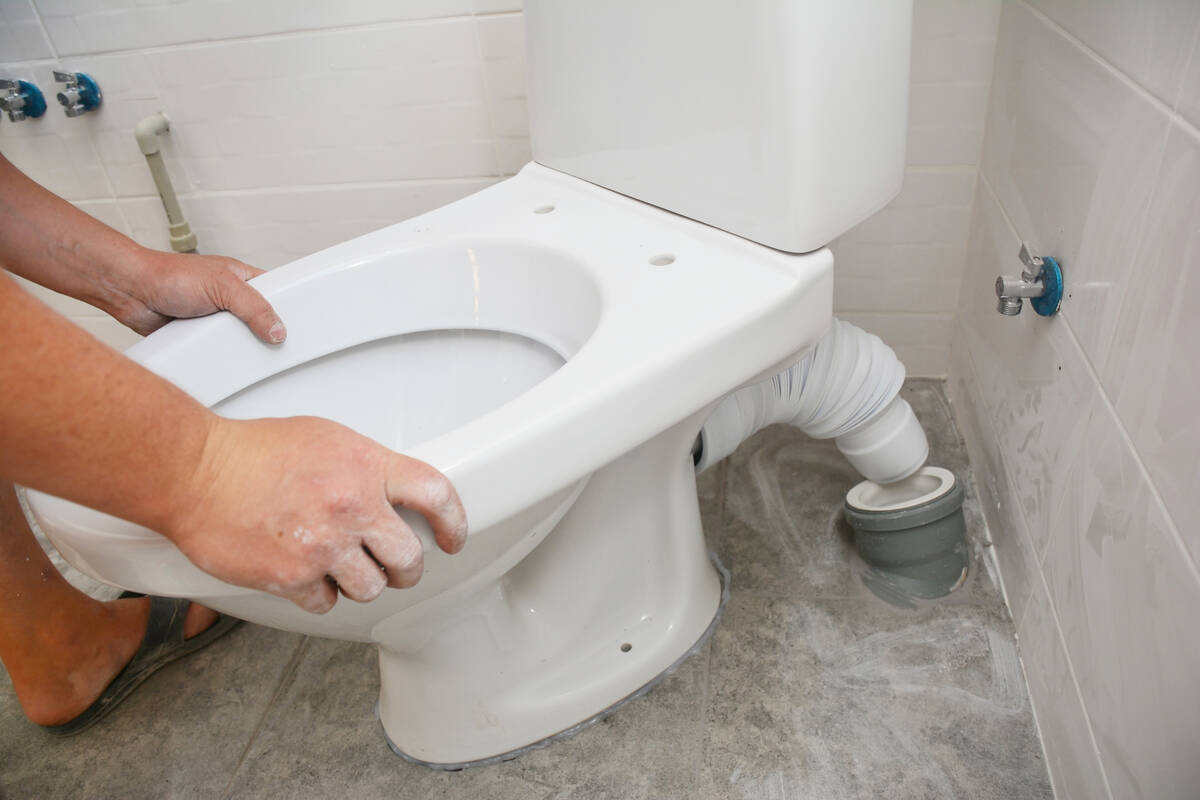
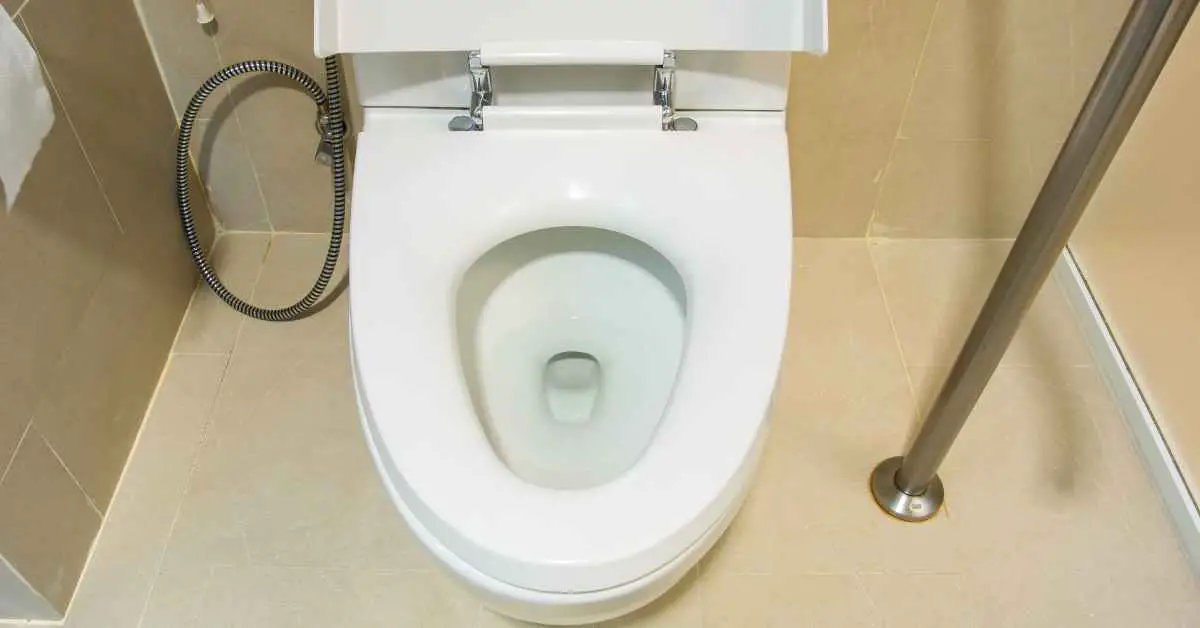
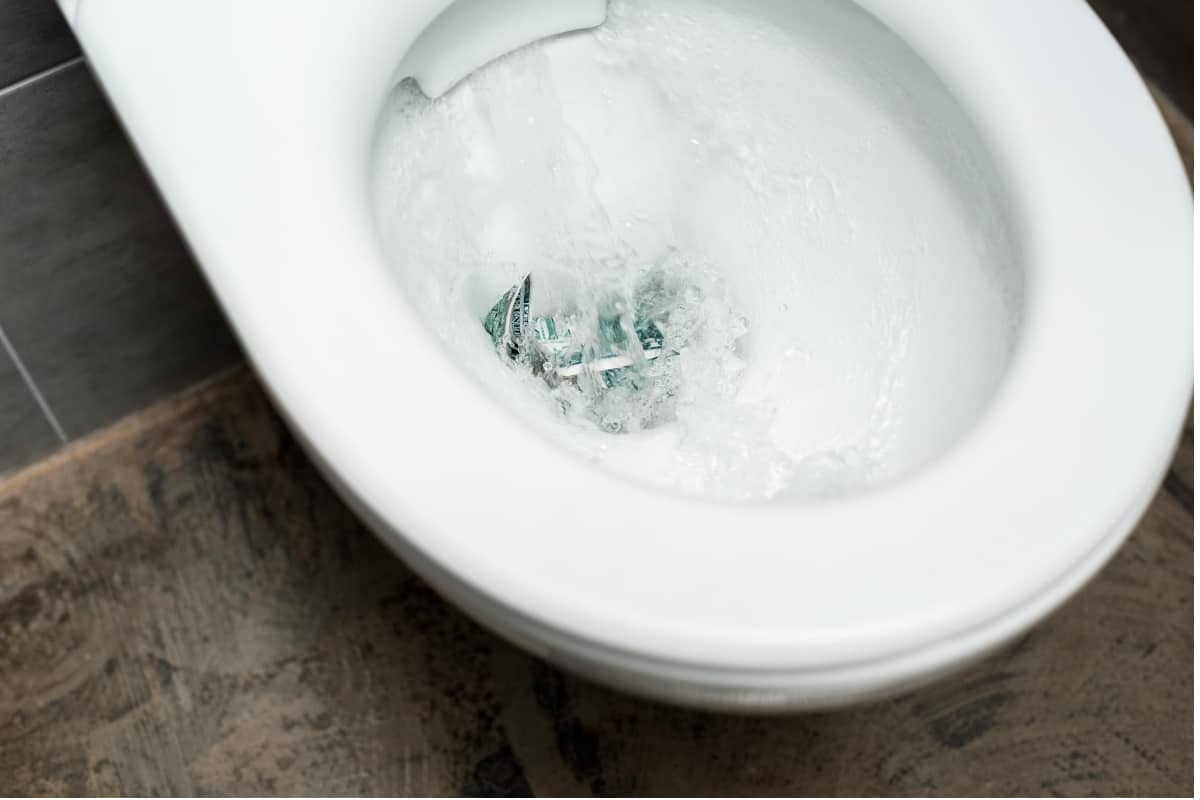
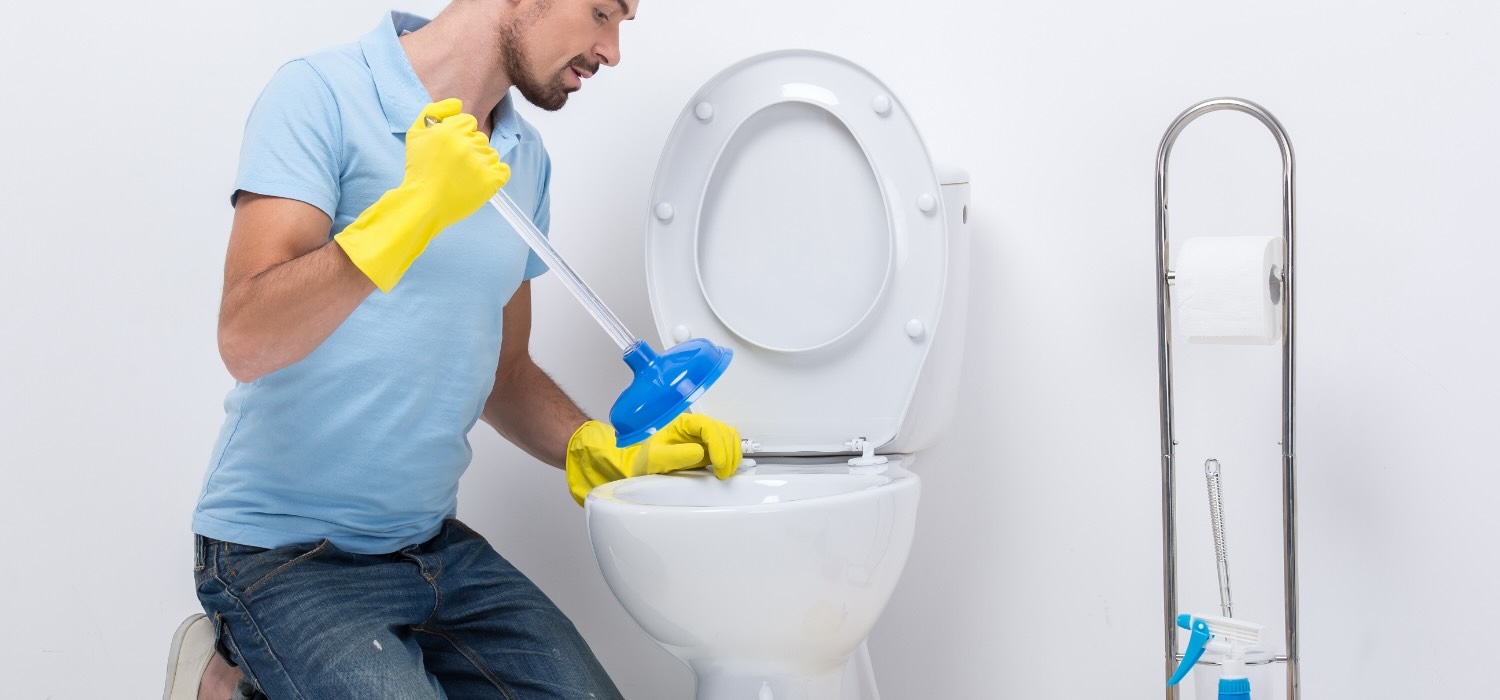
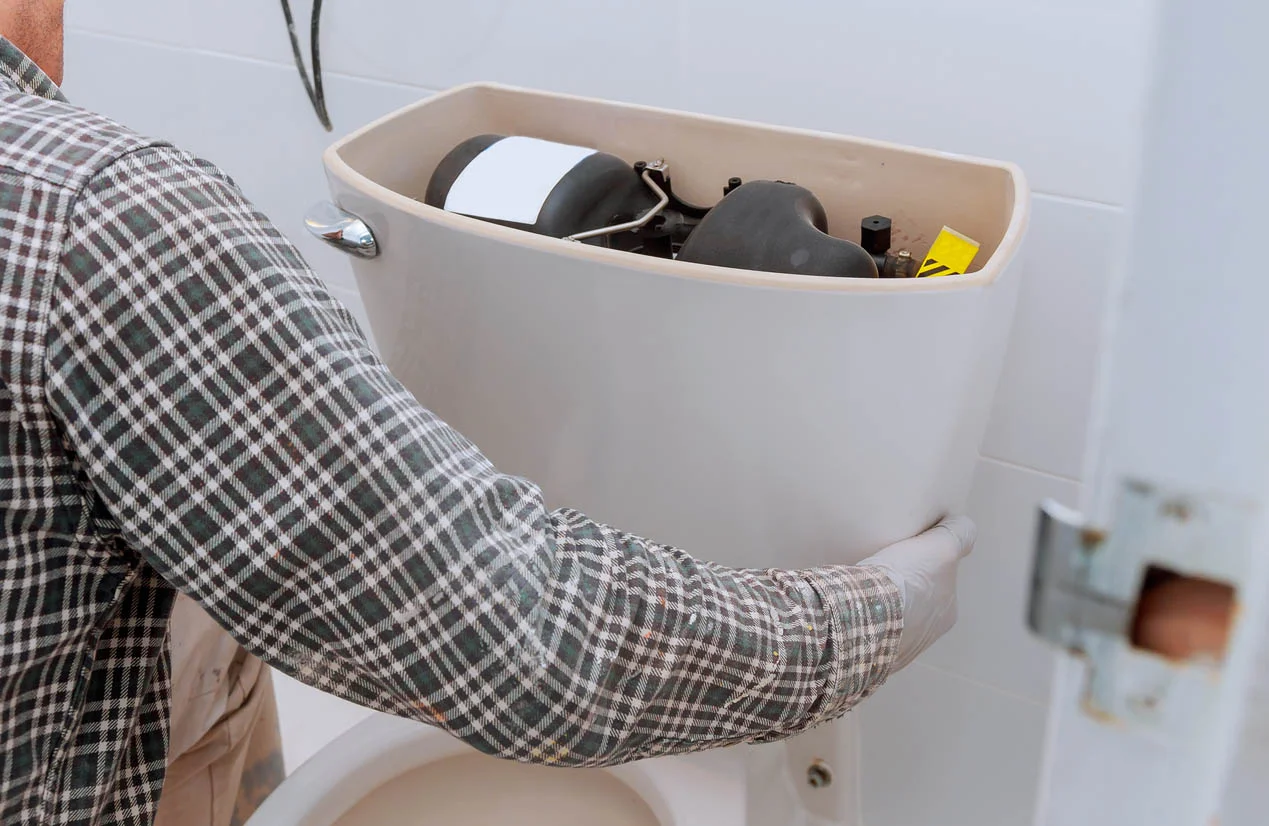
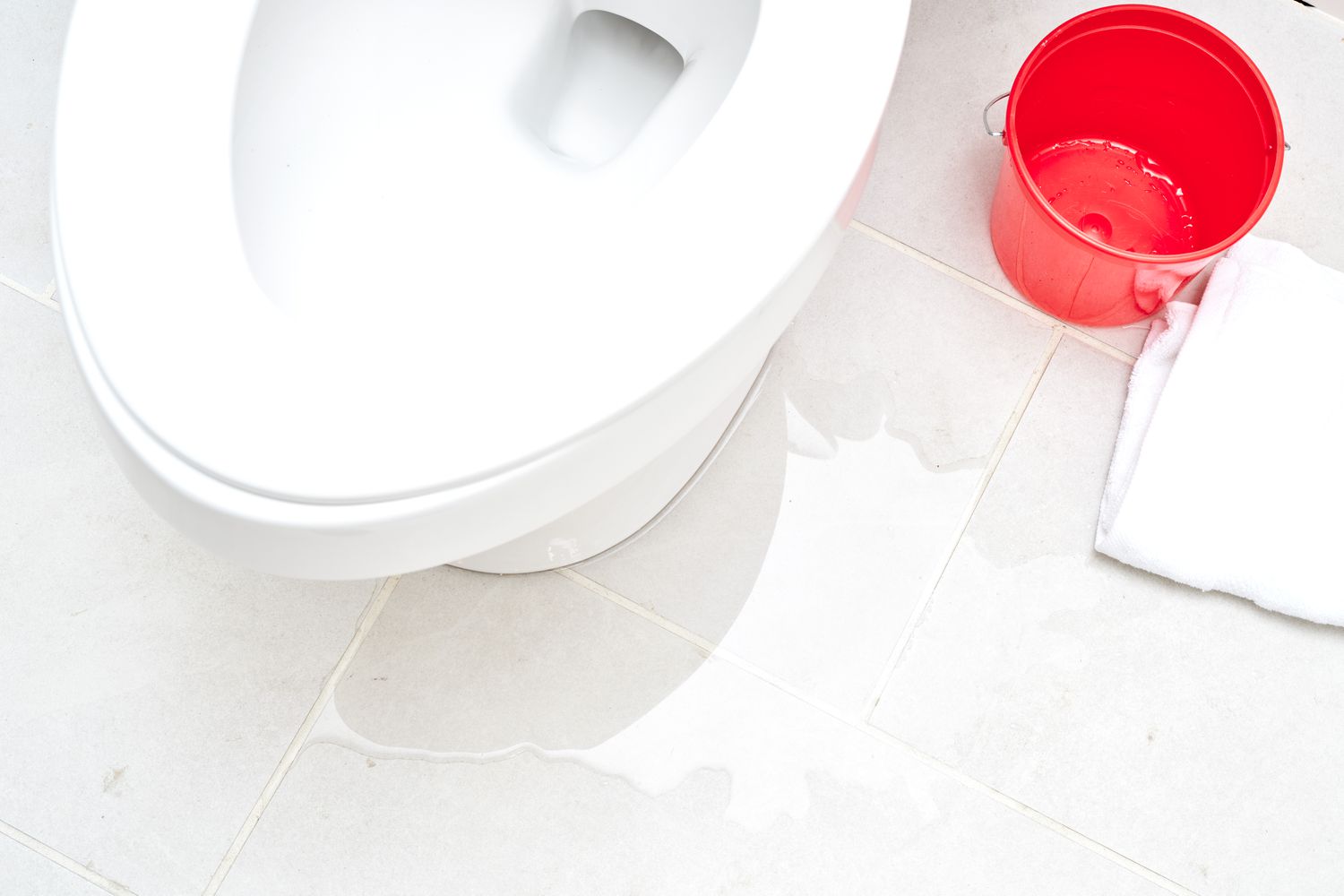
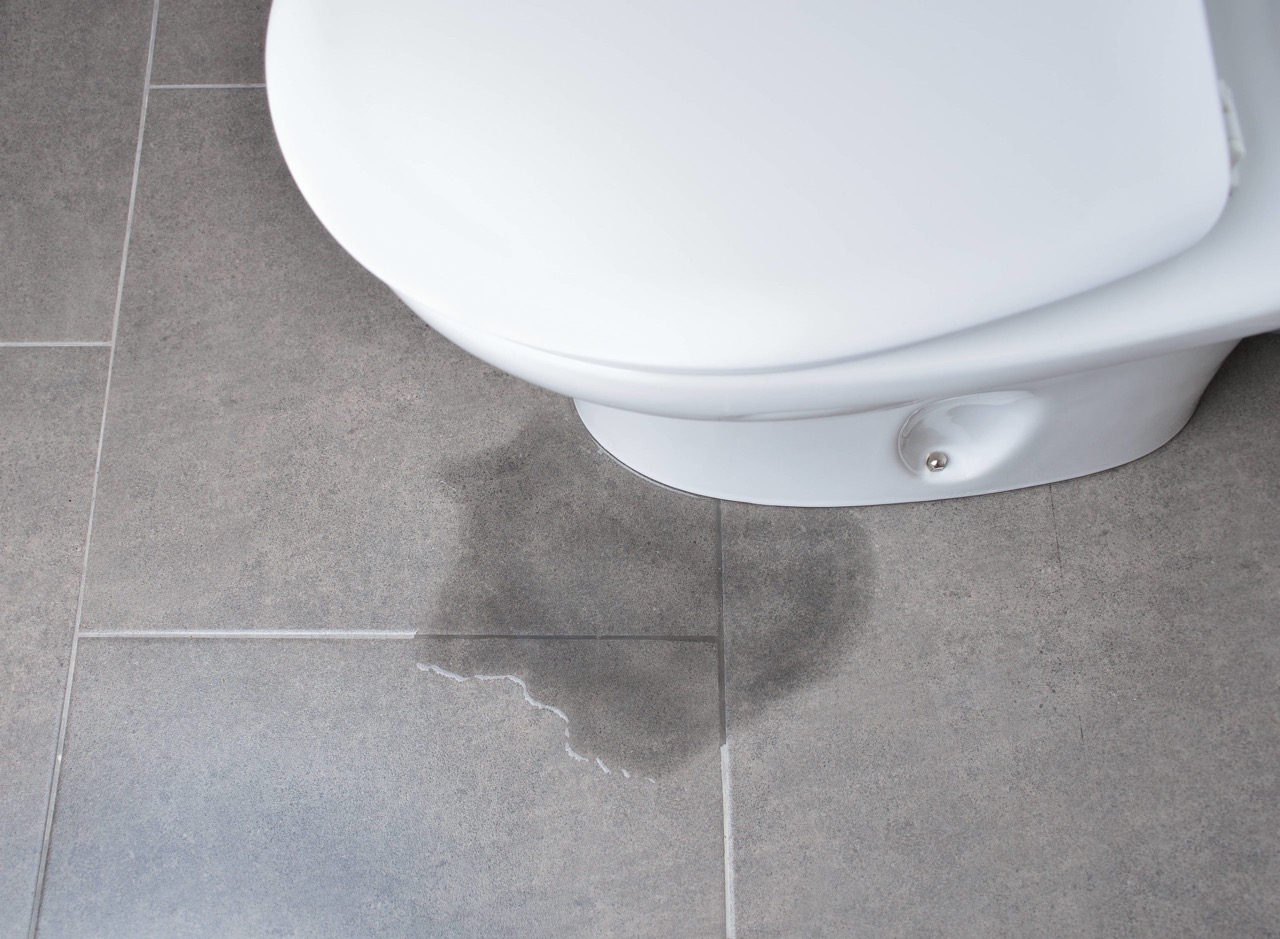

0 thoughts on “Why Is The Water In My Toilet Bowl Low”